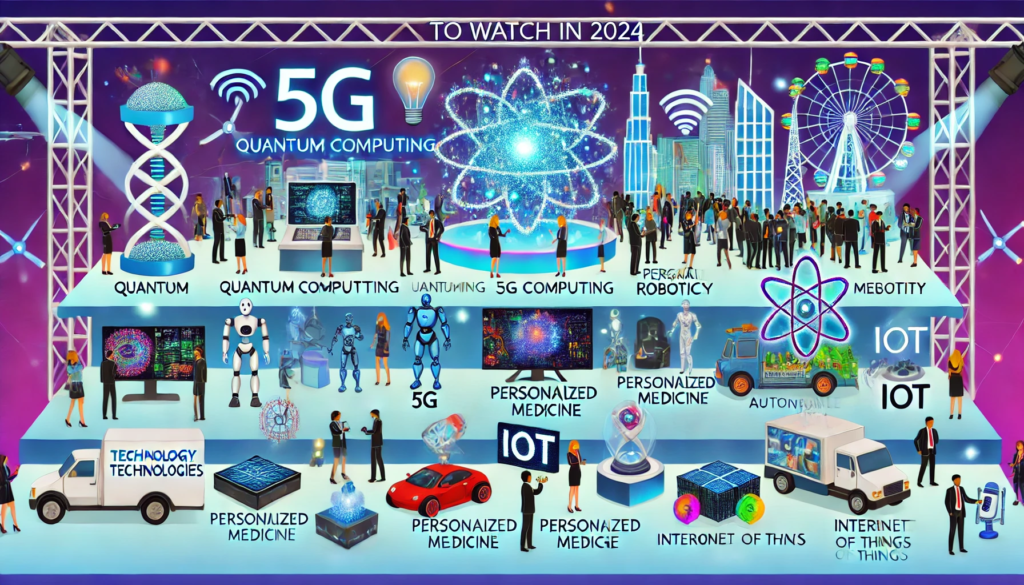As technology trends such as generative AI shape content creation and 5G facilitates agile and interconnected systems, they hold great promise for business expansion. Staying abreast of these trends for lasting professional success is essential.

Sustainable technologies continue to play a central role as countries and businesses strive towards net-zero commitments. Drones provide aerial visuals for crop inspection, while CRISPR facilitates precise gene editing to advance treatments.
Artificial Intelligence
Artificial intelligence and machine learning technologies enable computers to think like humans, recognize data patterns, automate tasks, make recommendations to enhance customer experiences, and much more.
AI systems can perform complex analysis faster than humans, allowing them to identify solutions and patterns that would otherwise be difficult for us to detect – for instance, identifying an ideal drug dose for an individual patient or finding surgical procedures that minimize risk while increasing success rates in operations.
Artificial Intelligence can be broadly divided into weak and strong categories, with weak AI performing tasks such as video gaming or personal assistants like Amazon’s Alexa or Apple’s Siri; strong AI, on the other hand, can carry out more complex human-like tasks such as operating autonomous vehicles or understanding language.
Quantum Computing
Quantum computers use qubits – elements with multiple states simultaneously – as data processors, unlike classical computers, which rely on binary bits that only support 1 or 0. These quantum computers promise to tackle difficult problems that supercomputers alone cannot. They have since attracted significant investments from governments and major businesses alike.
Companies like IBM, Google and D-Wave Systems lead the charge in quantum computing innovation. They have already demonstrated how quantum computers can complete certain tasks exponentially faster than conventional ones.
However, full-scale quantum computers are still years away. When they arrive, experts expect them to significantly impact areas such as drug discovery, materials science and finance. Plus, they could even use post-quantum cryptography (PQC) against encryption algorithms, which help secure the internet – something organizations must prepare for now as one of their greatest security challenges.
Cyber Resilience
Cyber resilience refers to an organization’s ability to detect and respond rapidly to cyber attacks, with minimal damage caused, protecting data infrastructure and maintaining business continuity as top priorities. One ransomware attack occurs every two seconds worldwide and costs businesses $265 billion yearly, so cyber resilience must remain top of mind for every organization.
Resilient security posture requires comprehensive visibility across all global assets, with automation to proactively identify and respond to threats in near real-time. Furthermore, planning for attacks requires regular surface changes to make attacking more challenging for attackers.
An effective cybersecurity program requires training hybrid cyber-electrical experts who can serve as intermediaries between IT security professionals and control system engineers, and these measures, along with continuous threat exposure management (CTEM), can help organizations achieve a resilient cyber posture.
Blockchain
Blockchain technology underlies digital currencies like Bitcoin. At its core, it is a decentralized ledger that records transactions transparently and unalterably.
This technology can be utilized to verify a wide variety of data points – from votes cast in democratic elections, product inventories and state identification numbers, all the way to deeds of homes. Processing ownership transfers quickly reduces centralized processing needs significantly.
Companies already use blockchain solutions in various business operations, from supply chain tracking and workflow automation to customer data access. Indianapolis health insurer Anthem is using it to give customers access to their information while increasing transparency. Dole Foods uses it to track food quality from farm to table while verifying digital identities with multi-factor authentication solutions.
Clean Technology
Clean technology encompasses techniques that seek to minimize the environmental impact of production processes through recycling, renewable energy or green chemistry. This includes methods such as recycling waste for recycling purposes or using carbon capture microbes that transform carbon emissions into valuable products, such as scrubbers on smokestacks or catalytic converters on car tailpipes, as well as those which reduce pollution before they form (e.g. electrocaloric materials that provide sustainable cooling solutions or carbon capture microbes that convert CO emissions into valuable products).
With new technologies emerging nearly daily, business and technology leaders must strategically select which technologies will make sense for their institutions by balancing risk, investment, and potential return. To assist leaders in making these choices, Forrester has identified clean technologies by benefit horizon in three categories – energy & power, agriculture & food, and mobility & transportation. Each one could revolutionize our daily lives through the commercialization of cleantech.
- Immersive Reality
Immersive virtual reality (IVR) uses a headset, hand controllers and stereoscopic screen to provide users with a three-dimensional experience replicating another reality. IVR can be used for various purposes, including gaming — such as the kind that leads to meeting other people online at real locations to play together — education and healthcare purposes.
Gen AI for language continues to push other emerging technologies forward and expand its role in customer support and content creation. Watch our on-demand webinar for an overview of this year’s Top 10 Emerging Technologies that could transform business operations, and learn how to incorporate gen AI into your organization – this process must begin soon – click here now to get going.
3D Printing
3D Printing (US Site) is an additive manufacturing technology that utilizes lasers, electric arcs or electron beams to fuse layer upon layer of materials into physical objects. It can print plastics and metal alloys with intricate geometries, which would otherwise be impossible or impractical through traditional manufacturing processes.
3D printing is fast and has low setup costs. It is commonly used in aerospace and automotive to build topology-optimized structures with an increased strength-to-weight ratio, manufacturing where it reduces assembly time and costs by replacing parts with consolidated ones or altogether, healthcare for custom implants and devices creation, among other uses.
Artificial Intelligence & Machine Learning
Artificial Intelligence allows software to analyze data, predict outcomes and perform tasks which would otherwise be infeasible or impractical for human beings to complete. Gen AI trends such as neural networks, neuromorphic hardware, parallel processing architecture and event-driven architecture, Machine Learning algorithms, and low-power design are driving rapid technological progress.
AI technologies are increasingly integrated into various business functions and industries to improve efficiency, customer experience and strategic decision-making. Image recognition enables AI to identify objects or people in photographs and any suspicious patterns that may indicate fraudulent credit card or log-in attempts.
Gen AI may create or exacerbate social issues. If biased data is fed into an AI model, the results may further inequities. Therefore, companies should utilize data-driven AI tools such as ChatGPT that automate repetitive tasks and increase employee productivity.
IoT
IoT automates data collection from physical environments and moves it into digital formats for analysis. This enables companies better to track operational performance, consumer habits and market trends and discover revenue-generating opportunities.
IoT sensors can be everywhere, from smartphones and laptops to refrigerators and cars, helping manage traffic flow, enhancing security and lowering carbon emissions. In warehouses, distribution centres, shipping terminals and shipping terminals alike, they’re used to save energy through energy-saving lighting, security camera surveillance systems and powering kiosks – providing energy-saving lighting, improved safety surveillance capabilities and powering kiosks – not forgetting traffic management!
As with other emerging technologies, IoT’s expanding attack surface makes it more vulnerable to hacking, necessitating stronger cybersecurity protocols. By keeping software updated and encrypting connections securely, stronger protection against these threats is ensured. Furthermore, it can enhance productivity by automating manual tasks; automation in a greenhouse may control climate, lighting and air movement to save labour costs while improving plant growth.
Big Data
Every time a company’s customers open an email, interact with an app or website, visit a store, or speak to customer service, their interactions generate data that becomes invaluable for marketing, supply chains, finance, and more.
Unstructured data makes up most of the big data, yet it can take time to interpret. From meeting notes written on virtual whiteboards online to user-generated content and social media posts, this unstructured data provides insights into trends and consumer habits that may remain hidden.
Big data tools enable organizations to capture, process and interpret large information repositories more quickly and effectively. Such tools include machine learning, predictive analytics and data lakes. Furthermore, these can assist businesses in finding cost savings opportunities or solving socially impactful problems more effectively; plus, they help meet regulatory compliance.

